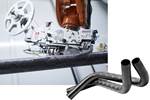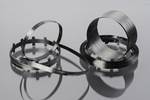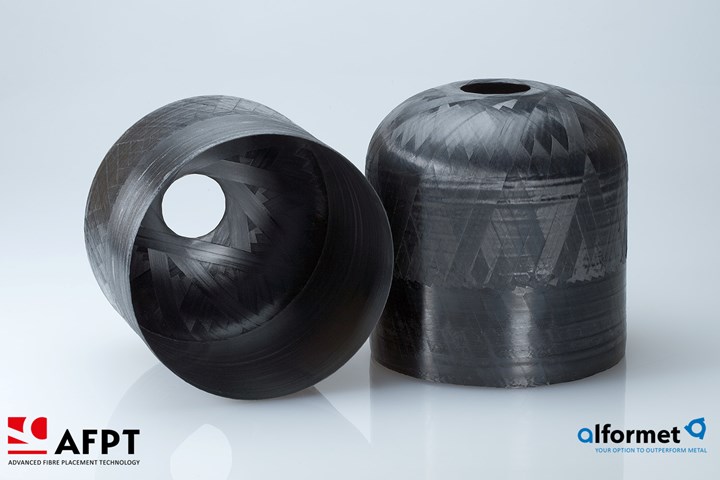AFPT combines tape winding, placement into one tool
Typically separate processes, the company’s new vessel winding head (VWH), merged with a multiple tape laying head (MTLH) progresses composite pressure vessel development.
There is a growing demand for pressure vessels, especially for the storage of hydrogen, many of which are composite. Two technologies are especially suitable for the development of thermoplastic composite pressure vessels: tape winding and tape placement. While typically separate processes, AFPT (Dörth, Germany) has developed a new laser-assisted tape winding (LATW) head that can provide the capabilities for both.
According to the company, the combination of tape winding and tape placement offers several new possibilities:
- Local reinforcement of pressure vessel domes enables wall thickness reduction in the cylindrical part. This will reduce tape consumption, manufacturing time and weight of the vessel.
- Production of pressure vessels without the use of a liner (Type V). A metal tool can be used to build a vessel’s two half shells with local reinforcement. After demolding, the two halves are welded together and reinforced via tape winding.
- Optimized process chain/process flow. The addition of on-the-fly and cut-on-the-fly features enable users to stop and start the process automatically. This can save time at start up and tape exchange, therefore reducing manufacturing time and labor costs.
However, combining winding and placement in one tool is challenging since several requirements must be fulfilled simultaneously. For example, the winding/placement head must be very compact and narrow to avoid collisions between head and winding axis. High productivity is needed, i.e., high laser power to enable the use of very long, and relatively wide and thick tapes at winding speeds of >60 meters/minute and an on-the-fly and cut-on-the-fly of >25 meters/minute. Moreover, factors like the compensation of deviations between programmed and real movement of the robot/kinematic system (deviations and position and speed) at high winding speed, a robust industrial design with limited maintenance intervals and offline programming of more complex winding and placement programs, are necessary to consider.
AFPT says its two proven concepts have managed to fulfill all of these requirements: the vessel winding head (VWH) with the multiple tape laying head (MTLH). The machine concept also incorporates an external tape supply that allows the use of pancake or transverse spools with a weight up to 100 kilograms. The new machine concept is suitable for R&D and it will be available for serial production with the use of a faster CNC kinematic system.
AFPT has also developed its own programming software to generate geodesic and non-geodesic paths for winding and reinforcement.
“The improved head capabilities for combined tape winding and tape placement makes it possible to explore all kind of new tank and tank-like designs,” says Coert Kok, cofounder and co-managing director of AFPT.
More information about AFPT’s new machine head will be released this fall.
Related Content
-
Carbon fiber in pressure vessels for hydrogen
The emerging H2 economy drives tank development for aircraft, ships and gas transport.
-
PEEK vs. PEKK vs. PAEK and continuous compression molding
Suppliers of thermoplastics and carbon fiber chime in regarding PEEK vs. PEKK, and now PAEK, as well as in-situ consolidation — the supply chain for thermoplastic tape composites continues to evolve.
-
Thermoplastic composites welding advances for more sustainable airframes
Multiple demonstrators help various welding technologies approach TRL 6 in the quest for lighter weight, lower cost.
















